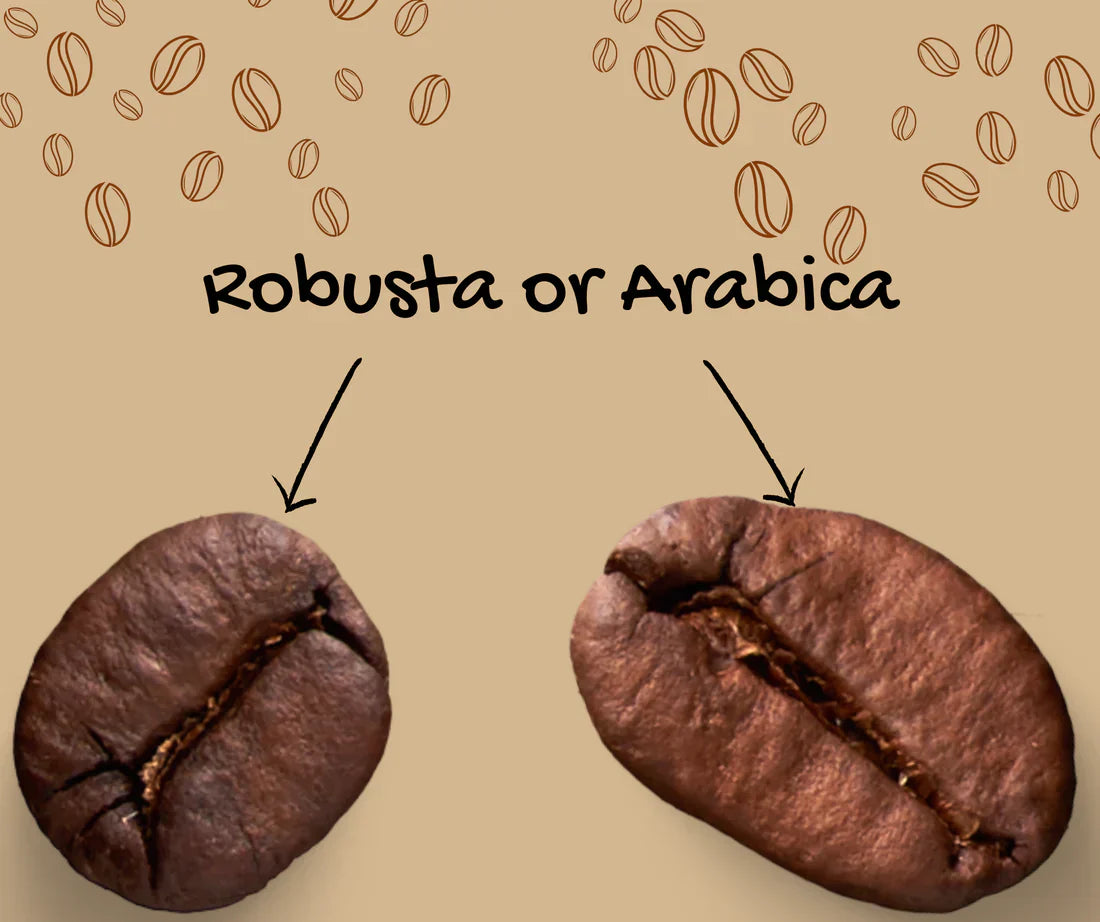
Arabica vs Robusta: What's the difference?
Share
When it comes to coffee, two names dominate the conversation: Arabica and Robusta. These two coffee bean types are the most widely produced and consumed varieties worldwide. But have you ever wondered what sets them apart? Let’s dive into the key differences between Arabica and Robusta coffee beans, so you can better understand which one suits your taste and preferences.
1. Origin and Growth
-
Arabica: Arabica coffee, scientifically known as Coffea arabica, originates from the high-altitude regions of Ethiopia. It is typically grown at elevations of 2,000 to 6,000 feet above sea level. Arabica plants thrive in cooler climates with consistent rainfall and are more delicate, requiring extra care during cultivation.
-
Robusta: Robusta coffee, or Coffea canephora, is native to the low-altitude plains of Central and Western Africa. It is primarily grown at elevations below 2,000 feet and is more tolerant of hot, humid climates. Robusta plants are hardy and resistant to pests and diseases, making them easier to cultivate.
2. Flavor Profile
-
Arabica: Arabica beans are renowned for their smooth, complex flavor profile. They often exhibit fruity, floral, and sweet notes with a touch of acidity. This makes Arabica the preferred choice for specialty coffee and single-origin brews.
-
Robusta: Robusta beans have a bold, earthy, and bitter taste with a nutty or woody undertone. They lack the delicate sweetness of Arabica and are often described as stronger and more intense. Robusta’s flavor is a better fit for espresso blends due to its robust nature.
3. Caffeine Content
-
Arabica: Arabica beans contain less caffeine, usually ranging from 1.2% to 1.5%. This contributes to their smoother, less bitter taste.
-
Robusta: Robusta beans pack nearly twice the caffeine content of Arabica, with levels around 2% to 2.7%. The higher caffeine not only adds bitterness but also makes the beans naturally more resistant to pests.
4. Shape and Appearance
-
Arabica: Arabica beans are oval-shaped with a curved crease running through the center. They tend to have a flatter and larger appearance compared to Robusta.
-
Robusta: Robusta beans are smaller, rounder, and have a straighter crease. Their denser structure is another distinguishing factor.
5. Cultivation and Yield
-
Arabica: Arabica plants are more challenging to cultivate due to their sensitivity to climate changes, pests, and diseases. They require specific growing conditions, leading to lower yields and higher prices.
-
Robusta: Robusta plants are resilient and can thrive in harsher conditions. They produce higher yields and are more cost-effective to grow, making Robusta beans a more affordable option in the coffee market.
6. Price
-
Arabica: Arabica coffee is generally more expensive because of its superior taste profile and the meticulous care required during cultivation.
-
Robusta: Robusta coffee is cheaper due to its ease of growth and higher yields. It is often used in instant coffee and commercial blends.
7. Uses in the Coffee Industry
-
Arabica: Arabica beans are the star of premium coffee shops and specialty roasters. They are often brewed as pour-over, drip coffee, or cold brew to highlight their nuanced flavors.
-
Robusta: Robusta beans are commonly used in espresso blends for their crema-enhancing properties and in instant coffee for their affordability and strong taste. They are also favored in regions that prefer darker, bolder brews.
Which One Should You Choose?
The choice between Arabica and Robusta ultimately comes down to personal preference and the type of coffee experience you’re seeking:
-
If you appreciate a refined, flavorful cup with delicate notes, Arabica is your go-to.
-
If you prefer a strong, bold coffee with a caffeine kick, Robusta might be your pick.
Both Arabica and Robusta play crucial roles in the coffee world, catering to diverse tastes and brewing styles. So, the next time you sip your coffee, take a moment to consider the journey of those beans and the unique characteristics they bring to your cup.
